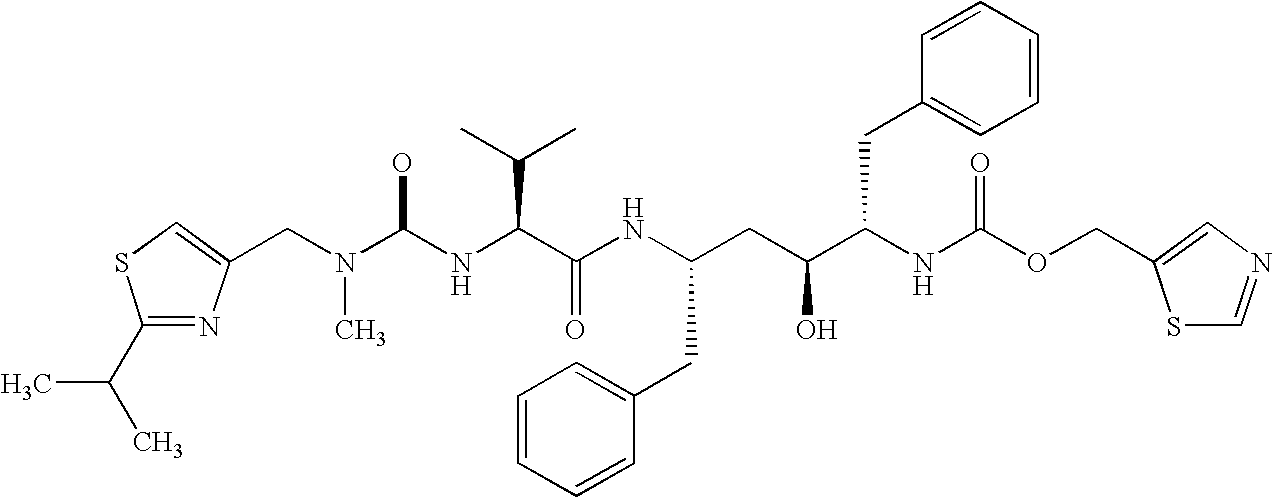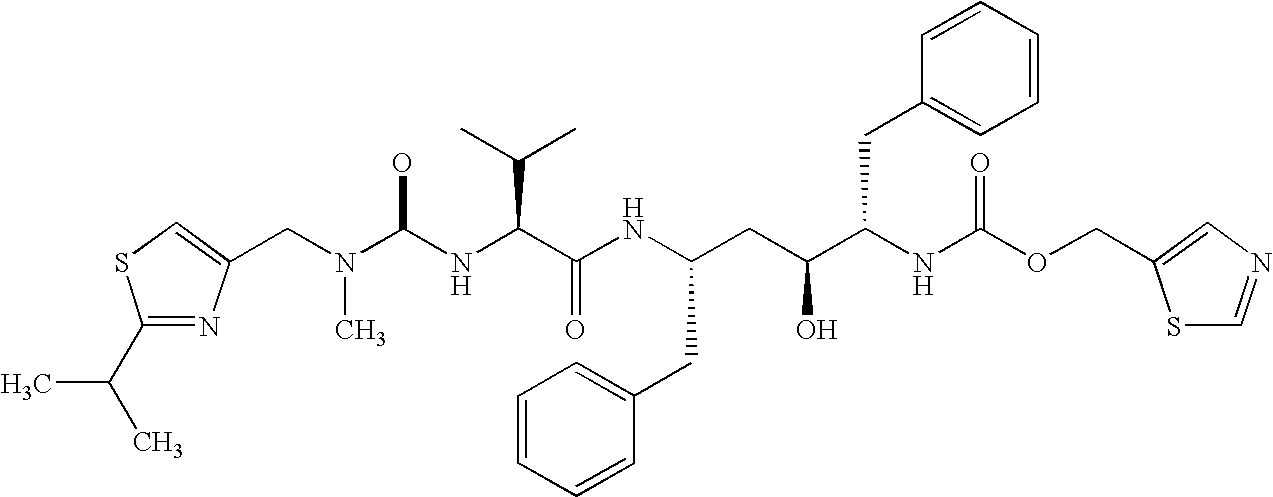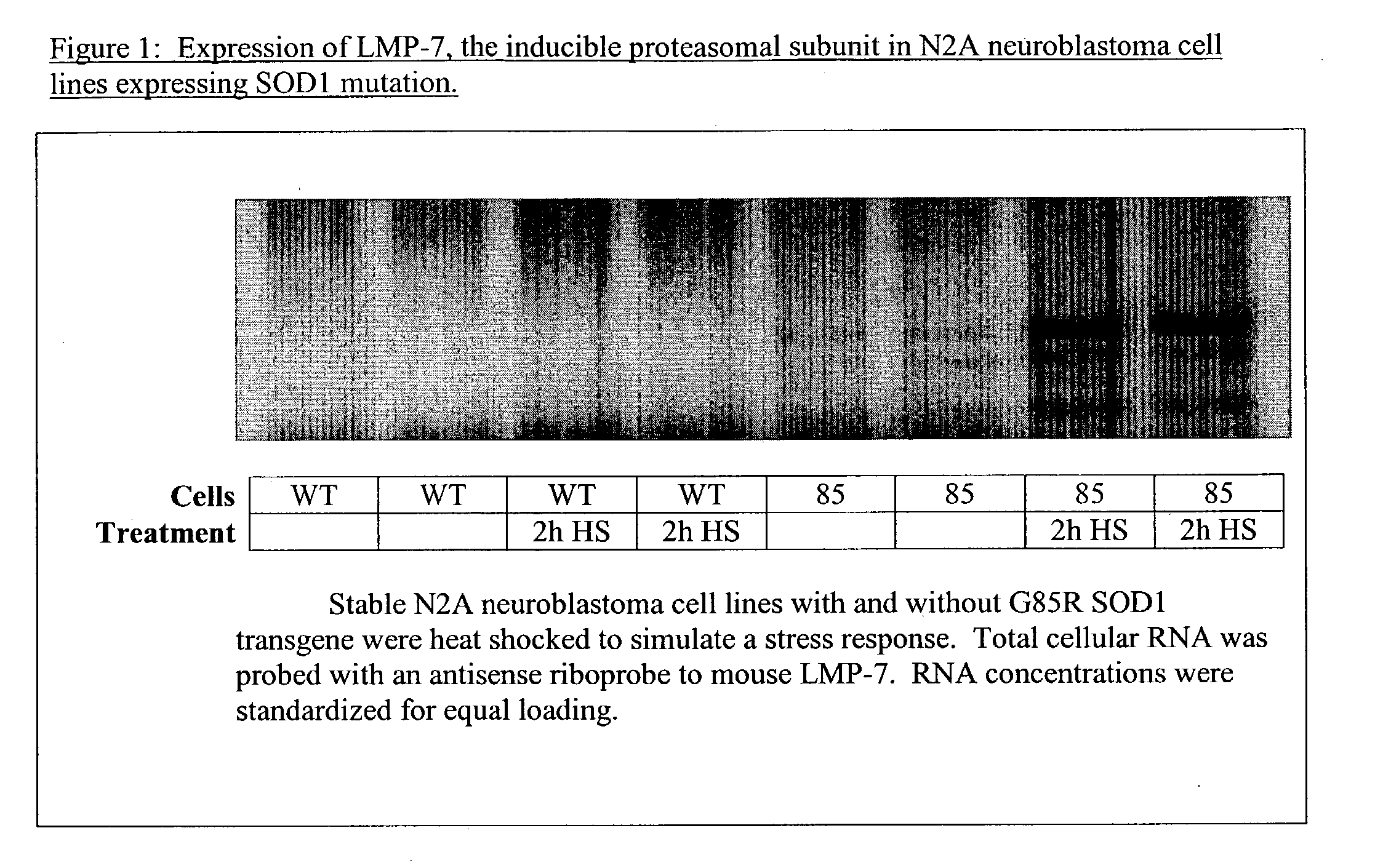Treatment of neurodegenerative diseases using proteasome modulators
a technology of proteasome and neurodegenerative diseases, applied in the field of neurodegenerative diseases, can solve the problems of invariably fatal outcome, inability to restore proteasome activity, and inability to provide relief, etc., and achieve the effect of restoring the desired proteasome activity
- Summary
- Abstract
- Description
- Claims
- Application Information
AI Technical Summary
Benefits of technology
Problems solved by technology
Method used
Image
Examples
example 1
[0166] Methods and Materials
[0167] Model Description: The SOD1 G93A (high copy) mouse model is a mouse that carries 25 copies of the human G93A SOD mutation and is driven by the endogenous promoter. Survival in the mouse is copy dependent. The high copy G93A has a median survival of around 128 days. High molecular weight complexes of mutant SOD protein are seen in the spinal cord beginning around day 30. At day 60 reactive astrocytosis (GFAP reactive) are observed; activated microglia are observed from day 90 onwards. Studies by Gurney et al. (Supra) showed that at day 90 reactive astrocytosis loses statistical significance while microglial activation is significantly elevated and continues to be elevated through the end stage of the disease (See Gurney, et al. (1996) Ann. Neurol., 39: 147-5739).
[0168] Many drugs that have shown efficacy in this model have move forward into human clinical trials. Experience with riluzole, the only approved drug in the treatment of ALS, indicates tha...
example 2
[0182] Modulation of ALS in a SOD-1 (G93A) Mouse Model
[0183] This example demonstrates the effects of Ritonavir.RTM. (an approved HIV protease-inhibiting drug) that binds to the LMP7 component of the immunoproteosome, resulting in decreased antigen processing and MHC I expression. It has also been shown to inhibit the activity of caspase 3 (a mediator of programmed cell death, or apoptosis) and to suppress cell proliferation by arresting cells in the GI phase the cell cycle (See e.g., Pati et al. (2002) Blood, 99: 3771-3779). The positive control drug in this model was riluzole (Rilutek.RTM.), the FDA approved drug for ALS. Various dosing paradigms were investigated to optimize the effect of Ritonavir.RTM.. Once the optimum paradigm was established, three separate studies employing similar dosing paradigms were conducted. The results from all three experiments support the conclusion that Ritonavir.RTM. is more active than the positive control riluzole (Rilutek.RTM.) in this model. T...
example 3
[0189] Modulation of ALS in an ALS Patient
[0190] The method of the invention can be used to administer Ritonavir.RTM. to a patient afflicted with a neurodegenerative disease, such as ALS at a daily dosage of about 200 mg / day to about 1200 mg / day for about 3-6 months. The effects of Ritonavir.RTM. administration can be monitored by examining the alleviation of the disease, a decrease in progression of the disease, or an amelioration of the symptoms of ALS in the patient. The therapeutic effects of Ritonavir.RTM. in ALS can be assessed, for example, by monitoring an improvement in muscle activity, or reflexive activity of the patient, such as the improved ability of the patient to swallow or move limbs. Alternatively, the therapeutic effects of Ritonavir.RTM. can be determined by improving the patient's survival.
[0191] The results from an ALS patient who was given Ritonavir.RTM. at a daily dosage of 400 mg / day for about nine months demonstrated that since taking Ritonavir.RTM., the pa...
PUM
| Property | Measurement | Unit |
|---|---|---|
| nucleic acid levels | aaaaa | aaaaa |
| time | aaaaa | aaaaa |
| nucleic acid | aaaaa | aaaaa |
Abstract
Description
Claims
Application Information
 Login to View More
Login to View More - R&D
- Intellectual Property
- Life Sciences
- Materials
- Tech Scout
- Unparalleled Data Quality
- Higher Quality Content
- 60% Fewer Hallucinations
Browse by: Latest US Patents, China's latest patents, Technical Efficacy Thesaurus, Application Domain, Technology Topic, Popular Technical Reports.
© 2025 PatSnap. All rights reserved.Legal|Privacy policy|Modern Slavery Act Transparency Statement|Sitemap|About US| Contact US: help@patsnap.com



